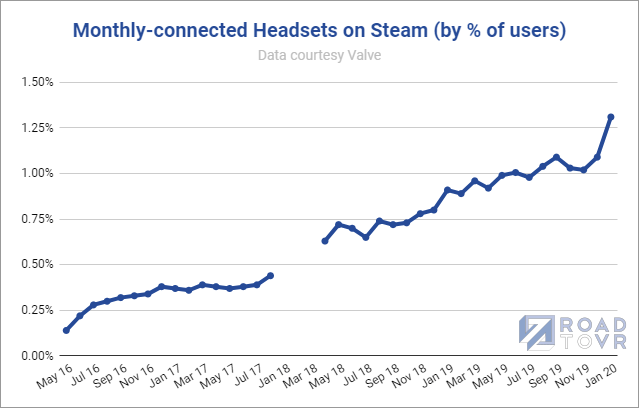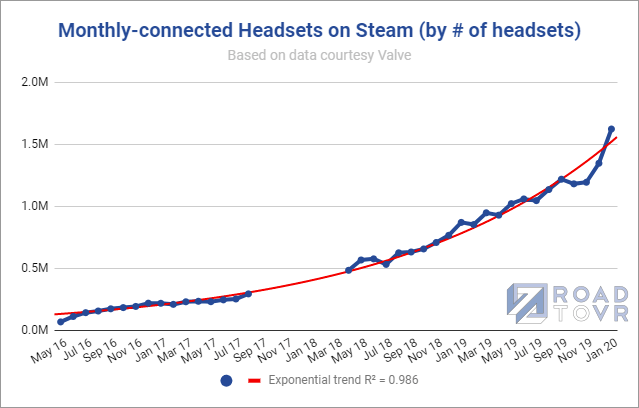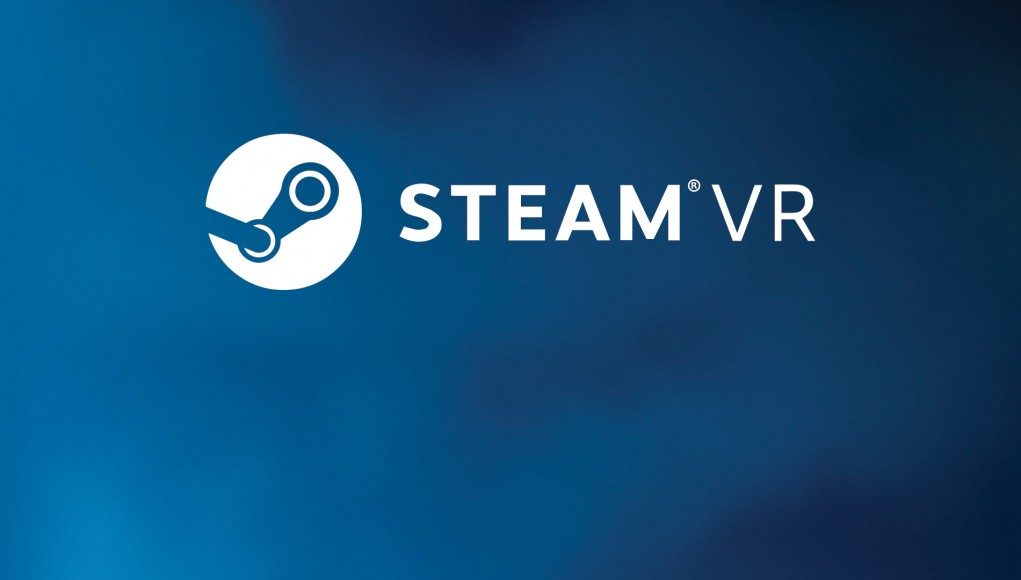It appears that the 2019 holiday shopping season may have been the best ever for PC VR headsets. The latest data released this week from Valve shows VR on Steam making its single biggest leap yet, on a path toward an estimated 2 million monthly-connected headsets.
VR headset growth on Steam has taken its largest leap yet while simultaneously breaking the record set just last month.
That’s according to the January 2020 data released this week from Valve’s Steam Survey. Each month the company collects info from Steam users to determine some baseline statistics about what kind of hardware and software is used by the platform’s population, and to see how things are changing over time; that includes which VR headsets are connected to users’ computers. Participation in the survey is optional, and headsets aren’t counted if they aren’t powered on and recognized by Steam at the moment that the data is collected.
Data is captured over the course of the month, which tells us how many headsets were connected to users’ PCs over that time period; we call the resulting figure ‘monthly-connected headsets’ for clarity.
Monthly-connected VR Headsets on Steam
The latest figures from January show the single biggest leap yet in monthly-connected VR headsets on Steam, now with 1.31% (+0.22%) of the population having headsets connected to their computers. With a year-over-year growth of 43%, this beats out the previous record set in January 2019 when monthly-connected headsets jumped by 0.11%, reaching 0.91% for the first time.
 January 2020’s data sets a new record high for monthly-connected headsets on Steam, no doubt driven by new headsets released in 2019 combined with the holiday sales season which saw numerous deals across headsets.
January 2020’s data sets a new record high for monthly-connected headsets on Steam, no doubt driven by new headsets released in 2019 combined with the holiday sales season which saw numerous deals across headsets.
When estimating the actual number of headsets by correcting for Steam’s changing population, the figure continues to follow a trend of exponential growth.
 By our estimate, the number of monthly-connected headsets on Steam now stands at 1.6 million, an increase of more than 271,000 from the month prior, and a strong step toward the 2.75 million headset milestone which we expect to see at the end of 2020.
By our estimate, the number of monthly-connected headsets on Steam now stands at 1.6 million, an increase of more than 271,000 from the month prior, and a strong step toward the 2.75 million headset milestone which we expect to see at the end of 2020.
Steam VR Headset Marketshare
As for the marketshare of individual headsets on Steam, Rift S had its best month so far. despite the headset having spotty stock availability since the holidays, the Rift S reached 24.34% (+5.88%) of the headsets in use on Steam. That puts the newcomer on track to overtake the leading first-gen headsets: Rift, now at 30.36% (-2.64%), and Vive at 26.91% (-2.84%).
 Part of Rift S’ big jump over rivals in January could be partly attributed to Oculus Quest, which can act as a PC VR headset via the Oculus Link feature which was released in mid-November. While Steam itself appears to identify Quest as a Rift S headset, it isn’t clear if the Steam Survey is lumping Quest in with Rift S or not counting it at all.
Part of Rift S’ big jump over rivals in January could be partly attributed to Oculus Quest, which can act as a PC VR headset via the Oculus Link feature which was released in mid-November. While Steam itself appears to identify Quest as a Rift S headset, it isn’t clear if the Steam Survey is lumping Quest in with Rift S or not counting it at all.
Oculus Grows its Majority Share Against HTC’s Decline
Though the original Rift gave up some ground to its successor, the collective share of Rift and Rift S grew to an all-time high of 54.7% (+3.24%), while the collective share of Vive, Vive Pro, and Cosmos dropped to 29.52% (-3.06%), continuing a steady decline in the share of HTC headsets on Steam over the last eight months.
Index, which has been starved for stock, grew slightly to 7.22% (+0.55%) and Cosmos to 0.60% (+0.19%), while Windows VR headsets continue a slow decline over the last five months, now down to 8.05% (-0.73%) of the share of headsets used on Steam.
As ever, it’s worth noting that the Steam Survey only gives us a glimpse of the overall VR market, as it only counts headsets connected to Steam, which means it doesn’t count some portion of Rift users which may not use Steam at all. Other major headsets like PlayStation VR aren’t counted at all.







